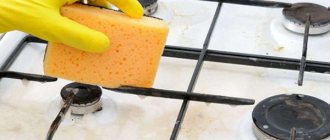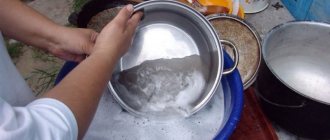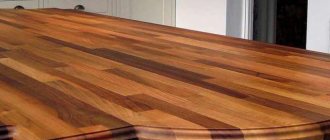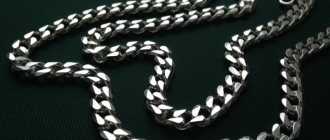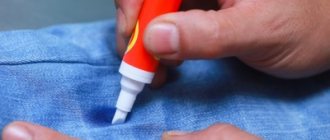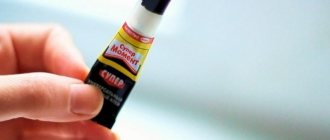Icer
3443 0 0
Icer February 10, 2019Specialization: master in the construction of plasterboard structures, finishing work and laying floor coverings. Installation of door and window units, finishing of facades, installation of electrical, plumbing and heating - I can give detailed advice on all types of work.
A couple of days ago, while making another masterpiece, children left marks on the table in the form of a few drops of super glue. At first I decided that the tabletop was irreparably damaged and I would just have to get used to the stains. But, after reading information from specialists and experienced housewives, I found a number of ways to remove glue. I will tell you about the most effective of them in the review.
Fresh glue should not be spread on the surface. Remove it with any flat device
Important Tips
In order not to aggravate the situation and not complicate your work, remember a few simple tips:
- Do not wipe off drops of fresh composition with a rag or napkin . You will stretch the second glue over the surface and instead of a small drop you will have a large dirty area that is much more difficult to wipe off. Take a toothpick, a piece of construction paper, or something else and carefully pry the droplet to remove it with minimal damage.
- Do not try to remove the glue with your fingers . Anyone who has had similar compounds come into contact with their skin knows how unpleasant it is and how long it takes to scrub their fingers off afterwards. Always use a tissue or something else to remove dirt without getting dirty.
Everything sticks to glue-stained fingers
- The sooner you start work, the better . No need to wait for the surface to dry. When the mass polymerizes, it becomes tens of times stronger and harder. But fresh stains can be removed much easier and faster, and you are almost guaranteed to remove the glue without a trace, which is not always possible if it has dried out and become embedded in the surface.
- It is better to prevent a problem than to fight it . Before starting work, I advise you to cover the tabletop with a rag or newspaper, so that even if the glue spills, you can easily clean it up. You can lay a sheet of paper only on part of the table, this is usually quite enough to glue something together.
Cover the table with paper, and if you spill the composition on the surface, cleaning it up will be as easy as pie
- Try different means . The effectiveness of one or another option depends on a number of circumstances. Therefore, I advise you to start with the simplest solutions that are at hand. And if they do not give the desired effect, then use more potent formulations.
- Always be careful while working . You need to be very careful when cleaning a varnished table, as the coating is easily damaged. To avoid polishing the surface later and re-painting it, do not rub too hard.
- Try chemicals on an inconspicuous area . To make sure that the product you choose does not damage the surface or leave marks on it, drop it on an inconspicuous area and wait a few minutes. If nothing happens, you can use this composition.
Which methods are better not to use?
You can use different methods to remove glue from the table. But at the same time, it is important to carefully approach the choice of a specific active ingredient. In order not to damage the furniture, you need to follow these recommendations:
- You cannot use a substance unless you are absolutely sure how the material will react to it.
- Do not use caustic substances in a closed room. They emit toxic fumes that can cause poisoning.
- Chemicals should not be used to remove glue residues that have come into contact with utensils used for preparing or storing food.
- First you need to use traditional methods that are gentle on the surface of the furniture, and only then move on to the use of more aggressive substances.
- To clean large surfaces, you should always try the selected product on a small area and monitor the reaction of the material for several minutes. To do this, be sure to wipe the surface after using the drug and look at its condition.
When cleaning furniture, it is important to wear rubber gloves. They will prevent irritation and protect the skin from damage. It is especially important to take precautions if you work with caustic compounds.
Available means
To begin with, I will talk about those compounds that are almost always on hand. They may be less effective, but if you are removing fresh stains, then this is quite enough to achieve excellent results.
| Illustration | Description |
| Option #1. Soap solution. Price – from 30 rub. Peculiarities:
| |
| Option #2. Nail polish remover with acetone. Price – from 40 rub. Peculiarities:
| |
| Option #3. Medical alcohol. Price - from 50 rub. Peculiarities:
| |
| Option number 4. Exposure to temperature changes. Price – free. Peculiarities:
| |
| Option #5. Lemon juice. Price – from 30 rub. Peculiarities:
|
Nail polish remover
It should be used with caution.
Although it is intended for removing nail polish, and it does not have such a strong effect on ordinary polish, you should manipulate a cotton swab dipped in it very quickly. How to remove a sticker from furniture with its help:
- Apply liquid to the tampon.
- Press it against the sticker or the remaining glue.
- If it’s a sticker, then wait a couple of minutes and start erasing it using the same swab.
- In the case of glue residues, it’s easier - they will be erased from the surface instantly.
- Then wash the surface with soapy water or dishwashing detergent.
Ready! All you have to do is wait until everything dries, and then rub the varnished surface until it shines and that’s it. Now the place where the sticker was cannot be distinguished from the rest of the surface.
Special formulations
There are both specialized tools and options that are used for other purposes, but are also suitable in our situation.
| Option number 6. Gasoline or thinner. Price – from 85 rub. Peculiarities:
| |
| Option No. 7. Dimexide. Price – from 100 rub. Peculiarities:
| |
| Option No. 8. Anti-glue. Price – from 140 rub. Peculiarities:
|
Remember that super glue is a cyanoacrylate compound. If the product indicates that it removes such compounds, then it is definitely suitable for you.
Methods for cleaning different surfaces
The adhesive composition may remain on different surfaces during operation. Most often, the furniture on which they work suffers. You can clean the product if you choose the right active substance and do not violate the rules of action.
You can remove glue from wooden tables and other wooden surfaces using nail polish remover. In this case, you need to be careful not to use alcohol or solvents on varnished surfaces. If the furniture is varnished, remove the glue from it with vegetable oil. They cover the stain for several hours, then remove it by mechanical scraping.
Tables made of plastic and glass are cleaned with a regular glass cleaner. After the adhesive layer has softened and the main part has been removed, the residues from the glass or plastic are scraped off with a knife. If superglue drips onto your glasses, remove it with nail polish remover. It is important to ensure that the composition of such a preparation does not include acetone.
To wipe the surface of a monitor, smartphone screen or other similar screens, dimethyl sulfoxide is used for this. Soak a rag in the solution and wipe the stained area with it. Then the remaining dirt is removed with special wipes for cleaning office equipment or just a clean, dry cloth.
Tips from the forums
- Never use cellulose wipes to wipe off fresh glue . The composition reacts with cellulose, causing it to heat up sharply and cause a burn. Plus, the melted mass is very difficult to remove both from the surface and from the skin of the hands.
Do not use cellulose wipes to remove fresh glue, this will further aggravate the problem.
- To remove super glue, use isopropyl alcohol . Sold at hardware stores and works great in most cases. It is used like most products - the surface is moistened and left for a short time. Then it is wiped off with a sponge or soft brush.
Isopropyl alcohol will help quickly and effectively remove dirt from hard surfaces.
- When using solvents, cover the surface . This way they will not evaporate into the air and the effect of use will be much better. Another option is a special paint remover; it is thick and does not need covering.
When using compounds that evaporate quickly, cover the surface with polyethylene.
- Use anti-adhesive with caution . Despite the fact that the packaging states that it is completely safe, at times the surfaces suffer. Therefore, before use, I advise you to apply a drop to an invisible area and leave for at least an hour.
Anti-glue may damage the surface, try it first on an inconspicuous area
- Use acetone when removing composition that has not yet hardened..
Acetone can clean fresh glue quite well.
Removal features: how to clean fresh stains
Until the layer has completely hardened, scrubbing the surface will be much easier; to implement the idea, you should prepare a solution of water and laundry soap. To quickly dilute a 72% piece, it is first rubbed into small chips, then immersed in hot water and waited until the component softens.
By periodically stirring the homemade product, a person will notice how the liquid begins to acquire a specific shade; when there is no soap left at the bottom, one should begin to wash the surface.
To apply and remove marks, it is better to take a brush with bristles or a regular dishwasher model with a hard side; fresh residues of the adhesive base are removed without excessive effort, so the surface remains in perfect condition, without scratches or other damage.
A solution that is mixed from laundry detergent and water at room temperature is considered no less effective; the disadvantages include the large formation of foam during prolonged rubbing with a rag.
But such excess is minimized as much as possible after using the “automatic” model, designed for pouring into a machine; a product copy is created in such a way that the powder does not lead to the accumulation of a large mass of bubbles.
Both methods will be relevant exclusively on fresh stains; you need to have time to remove the layer before it completely sets; for old marks, you will initially need to soften the structure of the fixing mixture, which soap or powder cannot do.
What to remember
- To remove, use the products you have on hand : soapy water, lemon juice, nail polish remover or alcohol.
- If there is no result, purchase special products . Dimexide is sold in pharmacies and is easier to find; anti-glue is less common.
- Always test the product on an inconspicuous area . Otherwise, instead of a glue stain, a chemical stain may remain.
Did you like the article? Subscribe to our Yandex.Zen channel
February 10, 2022
Furniture
If you want to express gratitude, add a clarification or objection, or ask the author something, add a comment or say thank you!
Anticlean
It would be best to immediately purchase, along with the second glue, a special product that neutralizes its effect. It is called “Anti-glue” and is produced by many manufacturers.
Mode of application:
- apply Anti-glue to the adhered mass;
- maintain the time specified in the instructions;
- After the chemical reaction, roll up the separated superglue with a rag.
This universal product will safely remove glue from wood, fabric, and even the skin of your hands.
How to remove Moment glue from your hands and remove superdrops from your skin
If the above measures are ignored, then be prepared for cleaning. First of all, you will have to save your nails from glue. What to use?
Special “Anti-glue”
Peculiarities. Hardware and construction stores sell special glue removers. Often. The cost of a 5 g tube varies from 30 to 40 rubles (data as of August 2022). The product allows you to quickly clean off dirt and does not cause an allergic reaction.
What we do
- Take Anti-Glue and apply it to the area contaminated with glue.
- We wait one hour (the time is indicated in the manufacturer’s instructions).
- Remove the residues in warm water with soap and powder.
You can use “Anti-glue Super Moment” from the German manufacturer Henkel, the Chinese “Strength”, and the Swiss “Second”. If you clean the glue from your fingers, you do not need to keep the composition on for an hour. In this case, you can remove superglue from your hands faster if you additionally use a non-rigid sponge.
Gentle solvent
Peculiarities. Less safe, but you can quickly wash superglue from your fingers by using solvents. In particular, those containing acetone (nail polish remover). Gasoline (“Galosh”) or white spirit should not be used. These are products for furniture and clothing, but not for the body.
What we do
- Take a cotton pad and soak it in nail polish remover.
- We wipe off superdrops.
- Rinse the skin with warm soapy water.
If the skin is delicate, damaged by scratches and cracks, then this method should absolutely not be used. It is better to replace the solvent with ammonia. The procedure with it consists of the same actions.
"Dimexide"
Peculiarities. "Dimexide" can be purchased at the pharmacy. The product is not only effective, but also budget-friendly. The drug is useful in the household not only for the war with glue - it is an antiseptic, which can also be used in facial and hair care.
What we do
- Soak a cotton pad in antiseptic.
- Leave on contaminated areas for several minutes.
- We wash the treated areas with warm water.
Soap solution and salt
Peculiarities. One of the most effective and simplest ways to get rid of Moment stains is salt or soap solutions. The process is not quick, so you need to be patient.
What we do
- Soak pieces of soap in warm water or dissolve table salt (three tablespoons per glass of water).
- Soak your hands in the bath for 10-15 minutes.
- Rinse with water.
For greater anti-glue effect, use a sponge or washcloth. You can also add a little vinegar to the bath, but only if there are no irritations or wounds on the skin.
Edible oils
Peculiarities. The question of how to remove superglue from the skin of your hands can be resolved with the help of these food products. This is a budget and the simplest solution to the problem. It is also absolutely safe for the skin.
What we do
- Thickly lubricate the areas contaminated with glue with butter or vegetable oil.
- Leave for five to seven minutes.
- Rinse your hands in a soap bath.
Cosmetic creams work on the same principle against glue.
But it is important that it has a fatty, thick consistency. Suitable, for example, for children.
Mechanical stripping
Peculiarities. The hard way
It is recommended to be careful not to harm the skin. Use pumice, nail file, sandpaper. Great if there are several layers of glue left on the surface of your hands
Great if there are several layers of glue left on the surface of your hands.
What we do
- Take sandpaper, a file or pumice.
- Carefully clean off the dried glue stain.
- Wash off any remaining residue in warm soapy water.
It is better to choose “zero” sandpaper, and the nail file should be of medium hardness. This will protect your skin from damage. It is strictly forbidden to tear fingers glued together with glue from each other with sudden movements.
We remove glue stains from plastic using aggressive means
Aggressive means:
- Dimexide. This drug is sold in a regular pharmacy. Wondering how to remove super glue from plastic? Thanks to dimexide, the adhesive stain can be wiped off without using physical effort. But, if you decide to choose this method, you need to remember that this product can damage the plastic. To avoid this, you do not need to leave dimexide on the surface for a long time. The maximum time is two minutes.
- Anti-glue. This is a new remedy and few people have heard of it, but of the above remedies, it is the most effective. In order to cope with the task of removing glue from plastic, it is enough to purchase anti-glue in the store. This miracle product can remove adhesive stains in just a few hours. To do this, just apply the product, wait a while, then remove the residue with a dry cloth.
Furniture care
Furniture should be regularly wiped from dust and protective agents should be applied. They will not allow the glue to penetrate deeply into the pores in case of negligence. Put covers on upholstered furniture that are easy to remove and wash, and in more severe cases, replace with new ones.
Mandatory condition: cover the table with newspaper or paper when working with adhesives. If you are repairing furniture with their help, use a brush that can be used to precisely apply the composition and not stain the surrounding surface.
Use the above cleaning methods if necessary, but try to keep such hassles to a minimum.
Solvents
If folk remedies turned out to be ineffective and could not soften the superglue, you will have to use chemical solvents.
This must be done carefully so as not to damage the skin of your hands and the surface being cleaned.
White Spirit
This substance is applied to a rag and traces of glue are wiped off. When the composition softens, it can be removed mechanically.
After cleaning, wipe the table with a clean damp cloth.
Refined gasoline
Remains of sticky mass can be removed using this product. You will need:
- moisten a rag with it and wipe the contaminated areas until the surface is completely clean;
- Afterwards, you can wash off traces of gasoline with a sponge soaked in lemon juice.
Acetone
Acetone or nail polish remover will help remove dried glue. The latter acts softer, but may not cope with traces of second glue. Before starting the procedure, it is worth checking the effect of the solvent on an inconspicuous area of the table.
Procedure:
- Pour acetone over the stained area and wait 30–40 minutes;
- After the allotted time has passed, it is necessary to remove the remaining sticky mass.
After this, you will have to remove the smell of acetone by soaking an old toothbrush in a soapy solution and wiping the cleaned surface.
Dimexide
You can buy a potent solvent at the pharmacy - dimexide.
It must be used with extreme caution, protecting your hands with thick gloves. Otherwise you may get a chemical burn
Instructions:
- lightly moisten a piece of cloth with dimexide;
- apply it to the contaminated area for 1 - 2 minutes;
- After this, wipe off the glue with a clean rag.
This method allows you to avoid the use of mechanical force. However, the solvent can corrode not only superglue, but also the plastic itself. To prevent this from happening, you need to try not to touch clean areas of the product.
What can I use to wash it off?
Superglue is valued by many consumers for its excellent technical characteristics. The mixture quickly and reliably glues a wide variety of materials. The advantages of this product become its disadvantages when it comes to how to clean the surface of glue.
Superglue has good moisture resistance, so the mixture cannot be washed off with ordinary water. An exception may be fresh traces of the solution that have not yet dried.
In construction stores you can purchase a special anti-glue cleaner. This mixture can be used not only to clean various objects, but also for the skin of your hands. Anti-glue does not cause allergic reactions and does not damage the skin, but you should not keep the mixture on the body for too long.
In addition to special compounds for removing glue, you can also use improvised means at home. When choosing a particular cleaning method, you should take into account the type of surface from which you want to remove adhesive residues.
You can remove traces of superglue using the following folk remedies:
- acetone;
- cosmetic nail polish remover;
- refined gasoline;
- White Spirit;
- "Dimexide";
- fatty cosmetic cream or edible oils;
- table salt;
- soap solution;
- petrolatum.
Contaminated surface areas can be affected not only chemically, but also mechanically
The mechanical method must be used with extreme caution, especially when it comes to the skin of the hands. To remove glue using this method, you will need fine-grained sandpaper or a piece of pumice.
Removing stains from stationery adhesives
There are two types of glue sticks:
- based on PVA;
- polymer-based (PVP), with glycerin as a humectant.
PVP glue differs from PVA in its greater degree of adhesion. PVP is removed from different surfaces with solvents, and where they cannot be used, the adhesive film is softened with glycerin. Grease stains can be removed with liquid wool detergent or regular dishwashing liquid. Liquid glue based on a polymer is eliminated in the same way.
Stationery silicate glue is easy to remove from furniture and glass while it is fresh. When the glue dries, it forms a glass-like plate. It is almost impossible to completely clean it from ordinary glass, a monitor screen or varnished wood. The glue is deeply absorbed into furniture upholstery and clothing, so if you clean it off when dry, you can tear the fabric.
Solvents
If folk remedies turned out to be ineffective and could not soften the superglue, you will have to use chemical solvents.
This must be done carefully so as not to damage the skin of your hands and the surface being cleaned.
White Spirit
This substance is applied to a rag and traces of glue are wiped off. When the composition softens, it can be removed mechanically.
After cleaning, wipe the table with a clean damp cloth.
Refined gasoline
Remains of sticky mass can be removed using this product. You will need:
- moisten a rag with it and wipe the contaminated areas until the surface is completely clean;
- Afterwards, you can wash off traces of gasoline with a sponge soaked in lemon juice.
Acetone
Acetone or nail polish remover will help remove dried glue. The latter acts softer, but may not cope with traces of second glue. Before starting the procedure, it is worth checking the effect of the solvent on an inconspicuous area of the table.
- Pour acetone over the stained area and wait 30–40 minutes;
- After the allotted time has passed, it is necessary to remove the remaining sticky mass.
After this, you will have to remove the smell of acetone by soaking an old toothbrush in a soapy solution and wiping the cleaned surface.
Dimexide
You can buy a potent solvent at the pharmacy - dimexide.
It must be used with extreme caution, protecting your hands with thick gloves. Otherwise you may get a chemical burn
- lightly moisten a piece of cloth with dimexide;
- apply it to the contaminated area for 1 - 2 minutes;
- After this, wipe off the glue with a clean rag.
This method allows you to avoid the use of mechanical force. However, the solvent can corrode not only superglue, but also the plastic itself. To prevent this from happening, you need to try not to touch clean areas of the product.
